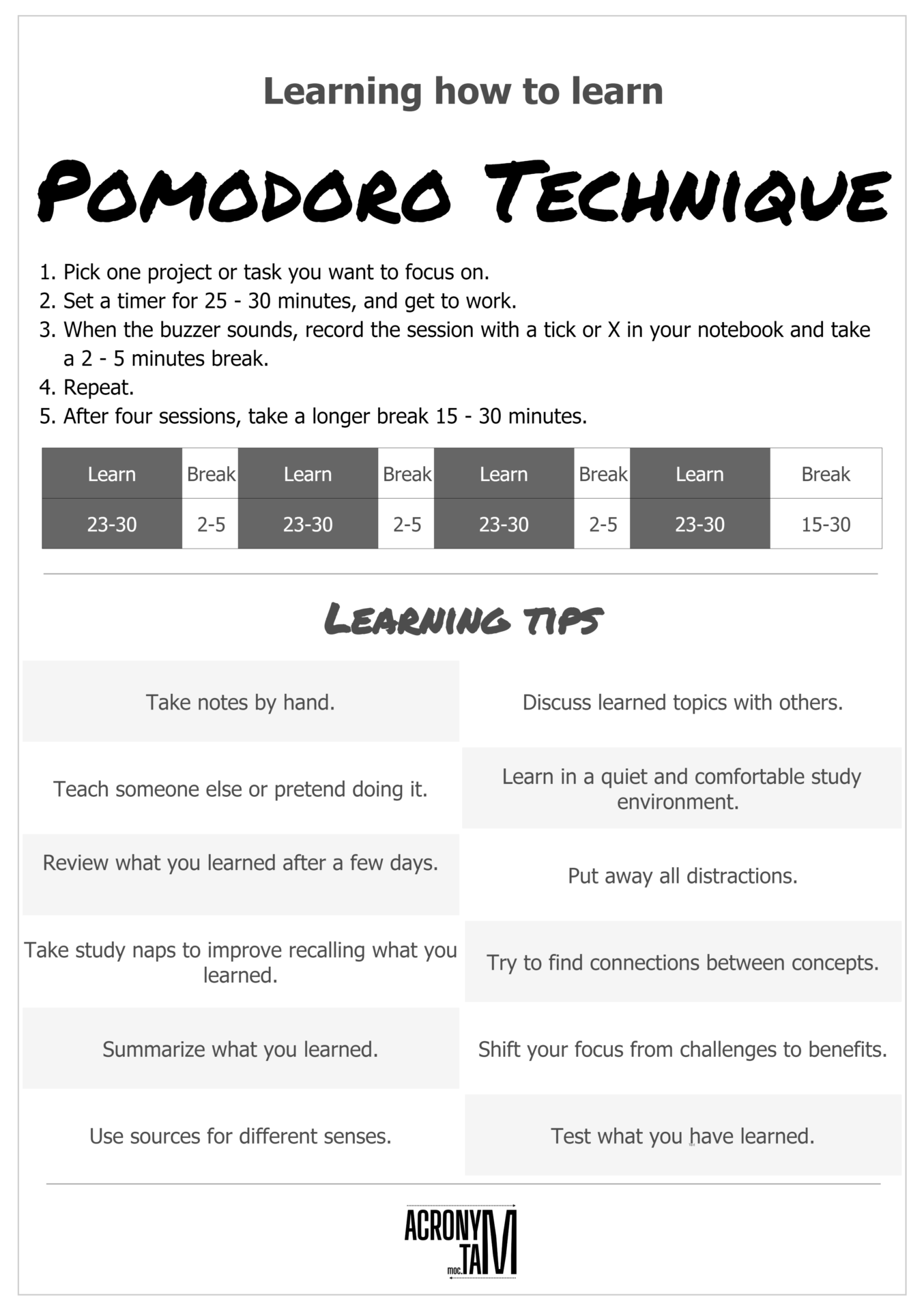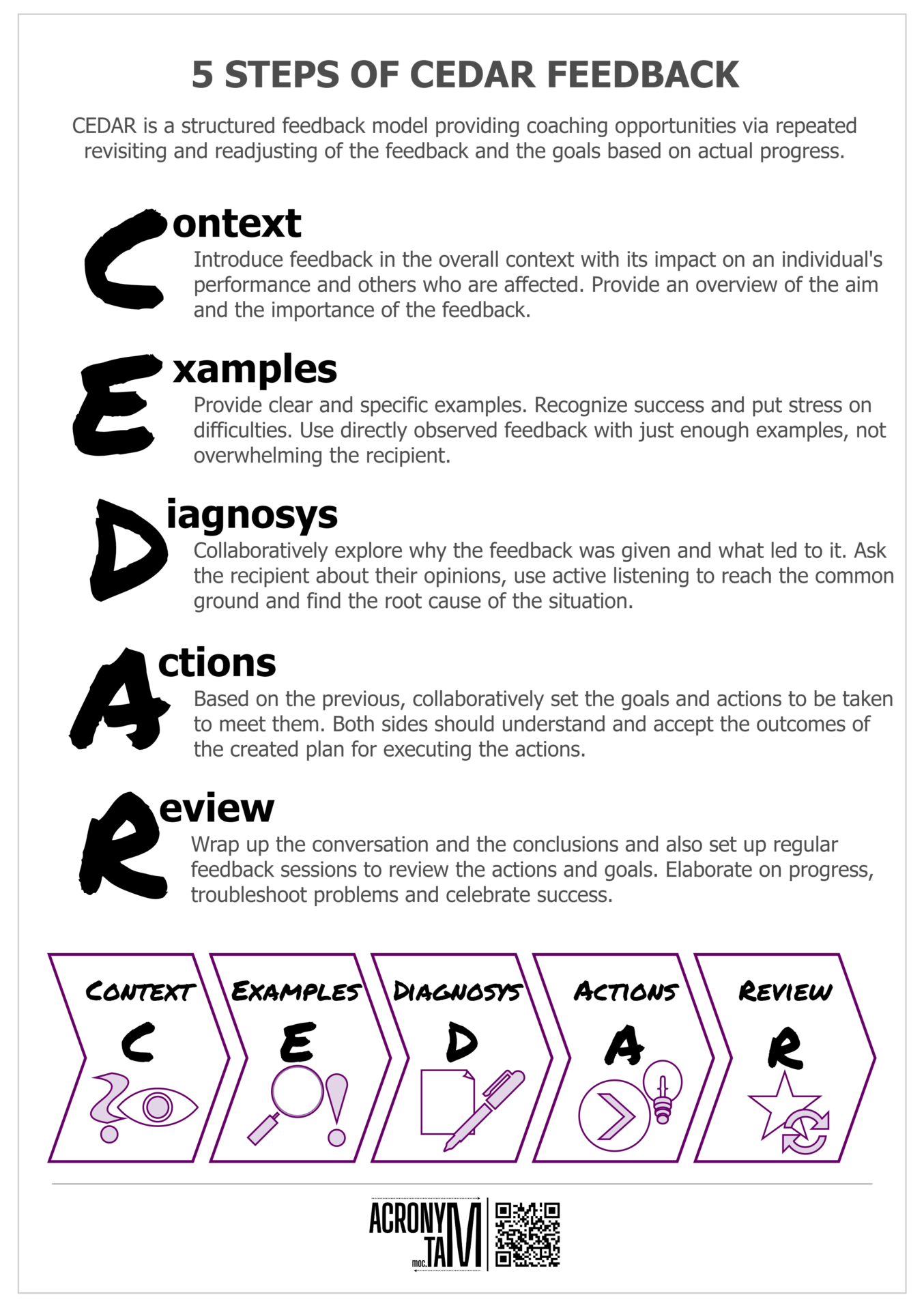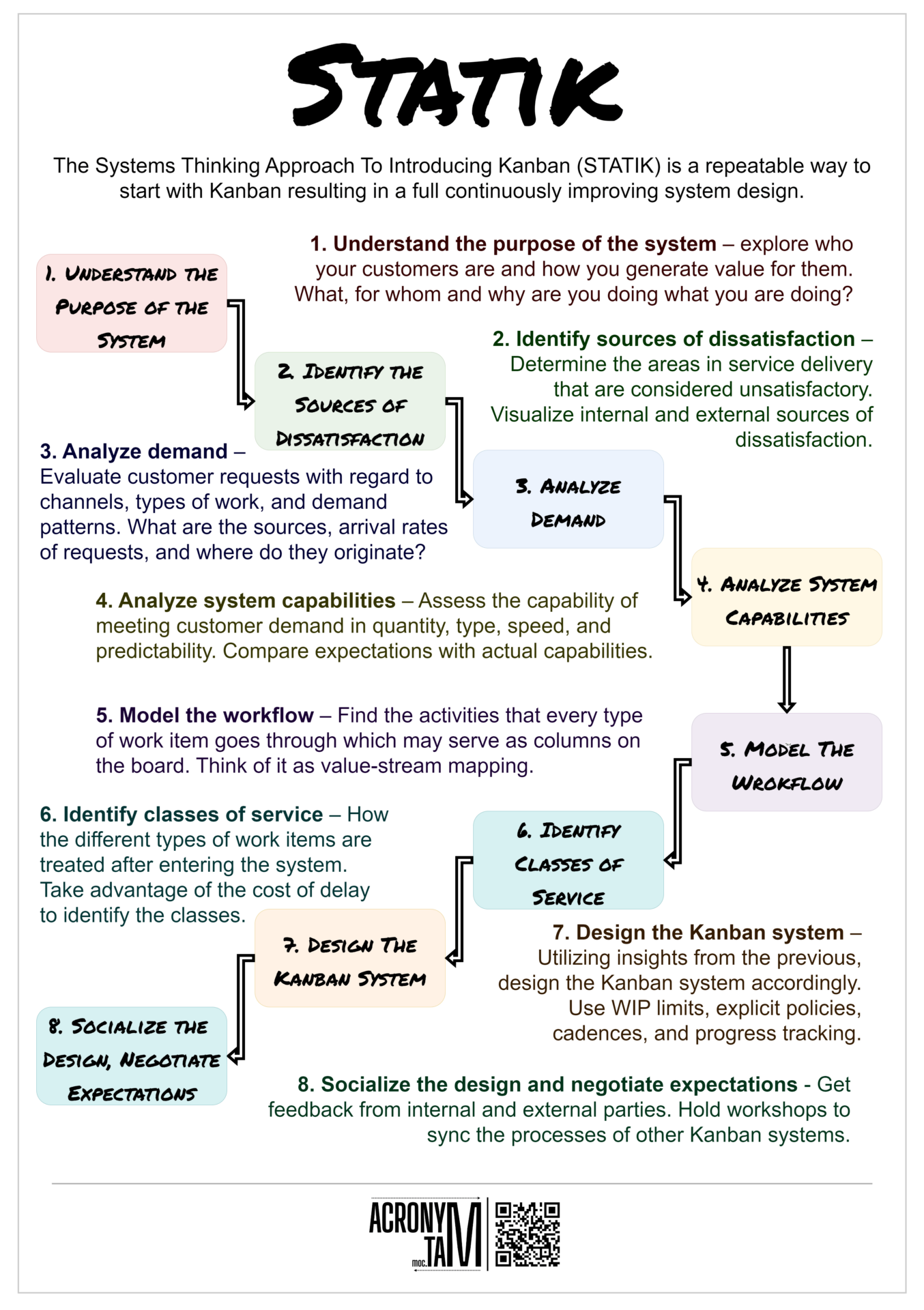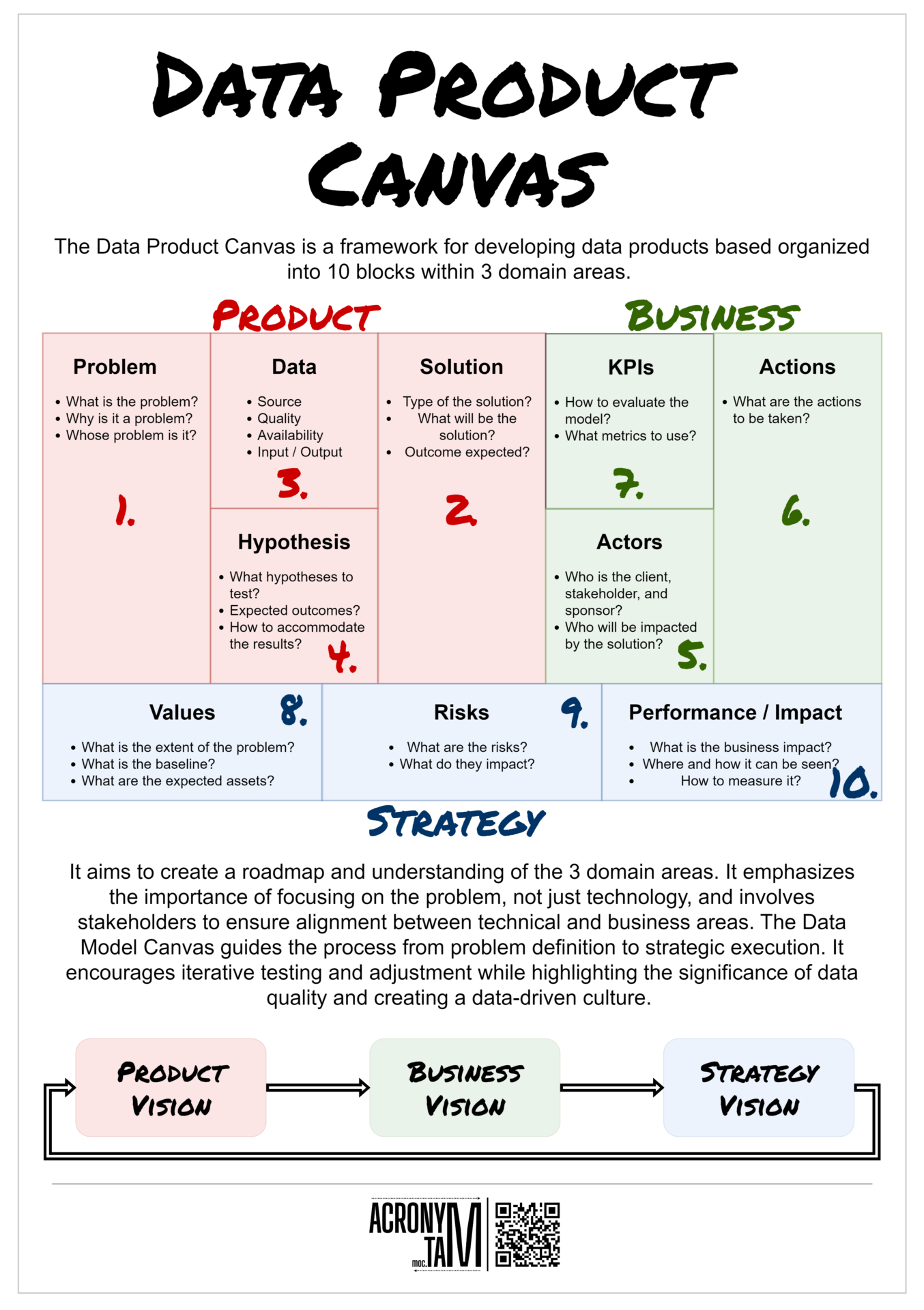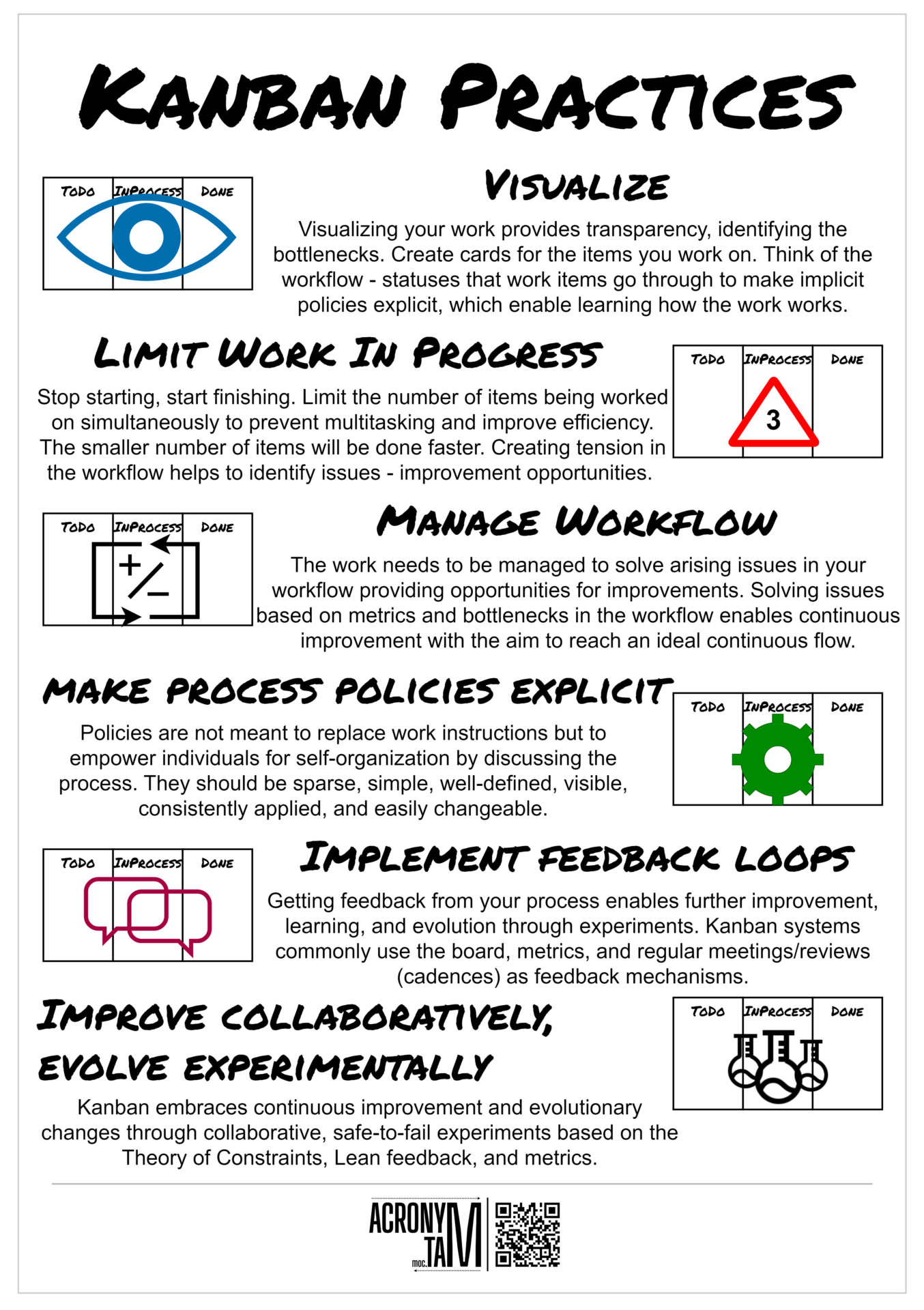Article
Pomodoro Technique
- Pick one project or task you want to focus on.
- Set a timer for 25 – 30 minutes, and get to work.
- When the buzzer sounds, record the session with a tick or X in your notebook and take a 2 – 5 minutes break.
- Repeat.
- After four sessions, take a longer break 15 – 30 minutes.
Learning tips
- Take notes by hand.
- Teach someone else or pretend doing it.
- Review what you learned after a few days.
- Take study naps to improve recalling what you learned.
- Summarize what you learned.
- Use sources for different senses.
- Discuss learned topics with others.
- Learn in a quiet and comfortable study environment.
- Put away all distractions.
- Try to find connections between concepts.
- Shift your focus from challenges to benefits.
- Test what you have learned.


